Exedy Stage 5 Triple Disc Carbon Racing Clutch Kit [V8]
$4,209.94 Original price was: $4,209.94.$3,578.45Current price is: $3,578.45.
-
Add to wishlistFeatures:
- Triple friction plates for up to 800 lbs.-ft.
- More friction area means a smaller diameter assembly for less inertia
- Quicker shifts and faster lap times
- All multi-plate clutch kits come with lightweight chromoly flywheel
- Purple anodized forged aluminum cover
- Strap or lug drive, depending on application
- SFI approved for racing
- Spring damper discs
- Carbon friction material
- SFI approved
Forged Aluminum Cover
- Average of 40% increase in clamp load over stock
- Extra capacity holds street/race car power upgrades
- Forged assembly far stiffer than stamped-type
- Incredible strength means no clamp-load deflection
- Integrated turbine-like fins enhance airflow, keeping clutch assembly cooler and will help extend life
- Ductile iron pressure plate provides high strength, anti-burst protection in all temperature ranges
Forged Chromoly Flywheel
- Combination of low weight and high heat capacity
- Designed for Rally, Drag and hi-performance Street
- Reduced weight and inertia means snappier throttle response and quicker shifting
- Designed to increase airflow to help cooling (most)
- One-piece flywheel – starter teeth machined in place
- Unlike aluminum flywheel, ring gear cannot separate
Available on backorder
Free shipping for orders over $750.00!
 Purchase and earn 3616 LSXOnly Points worth $36.16! *Must be logged in.
Purchase and earn 3616 LSXOnly Points worth $36.16! *Must be logged in.If you’ve modified your engine and substantially boosted horsepower and torque, a single-plate clutch may simply be inadequate to prevent slippage under full throttle. EXEDY has the solution for engines that deliver as much as 800 lbs.-ft. of torque by doubling the number of plates. The extra friction area also permits using a smaller-diameter assembly for less inertia. The heaviest components of the clutch system are the clutch cover, plates and flywheel. Low-inertia discs allow the transmission to synchronize in a shorter interval of time, eliminating time loss during shift changing while also reducing stress on drivetrain components. The weight of a carbon clutch disc is one third that of a metallic disc.
For most streetable applications, the preferred clutch disc is the cerametallic style with a damper hub. This style of disc will have a consistent feel throughout the day, from the first cold start of the day to a launch from the Christmas Tree after a heat-inducing burnout. The damper hub will help with a smooth launch and improved gearchange feel, as well as eliminate gear rattle moderate speeds. Gear rattle is caused by variations in crankshaft rotational speed, as individual cylinders fire. That in turn makes the gear teeth bounce and rattle against each other as you head on down the road.
A more ambitiously-modified vehicle, used mostly for drag racing, autocrossing or rallying might benefit from the use of a Carbon-D friction disc, Faced with pure carbon fiber, laid one strand at a time and baked at 3600° to cure, carbon fiber has an interesting characteristic: it’s coefficient of friction (COF) gets higher as it gets hotter. Unfortunately, it’s inconveniently low when at room temperatures, rising to the same COF range as cerametallic friction material when warmed properly. Used in a street vehicle, its inconsistent takeup may be annoying in a daily driver. Carbon fiber is very long-lived in heavy-duty use, however. Carbon-D friction discs have a spring-dampener hub for easy shifting and quiet gears. Carbon-D is equipped with a new dual stage damper, a low-load stage and rapid-acceleration stage, both of which are individually tuned for each car type.
For a dedicated race or track car, Carbon-R friction is preferred. The lack of a dampener hub may mean a fair amount of harshness, vibration and noise may intrude into the cabin or be felt in the gearshift or clutch pedal. The dampened hub, combined with the lighter weight of the whole assembly may make stating up difficult to do without some initial judder. The advantages in shifting speed and torque capacity are the payoff for this lack of refinement.
Due to the inherent properties of the carbon material, EXEDY suggests the proper way to bring the discs up to operating temperature. The correct method is three sequential five second “slips” of the clutch within 30 seconds at low RPM. This will heat the discs so they will hold the specified torque rating.
This product fits the following vehicles
Item may also fit vehicles not listed below.
| Year | Make | Model | Engine |
|---|---|---|---|
| Year | Make | Model | Engine |
| LOADING SEARCH | |||
WHAT CUSTOMERS SAY
Be the first to leave a review.
You are reviewing
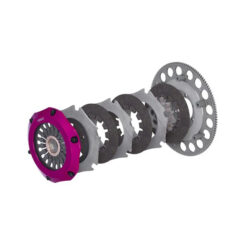
Exedy Stage 5 Triple Disc Carbon Racing Clutch Kit [V8]
Features:
- Triple friction plates for up to 800 lbs.-ft.
- More friction area means a smaller diameter assembly for less inertia
- Quicker shifts and faster lap times
- All multi-plate clutch kits come with lightweight chromoly flywheel
- Purple anodized forged aluminum cover
- Strap or lug drive, depending on application
- SFI approved for racing
- Spring damper discs
- Carbon friction material
- SFI approved
- Average of 40% increase in clamp load over stock
- Extra capacity holds street/race car power upgrades
- Forged assembly far stiffer than stamped-type
- Incredible strength means no clamp-load deflection
- Integrated turbine-like fins enhance airflow, keeping clutch assembly cooler and will help extend life
- Ductile iron pressure plate provides high strength, anti-burst protection in all temperature ranges
- Combination of low weight and high heat capacity
- Designed for Rally, Drag and hi-performance Street
- Reduced weight and inertia means snappier throttle response and quicker shifting
- Designed to increase airflow to help cooling (most)
- One-piece flywheel - starter teeth machined in place
- Unlike aluminum flywheel, ring gear cannot separate
Only logged in customers who have purchased this product may leave a review.

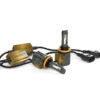
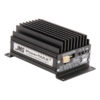
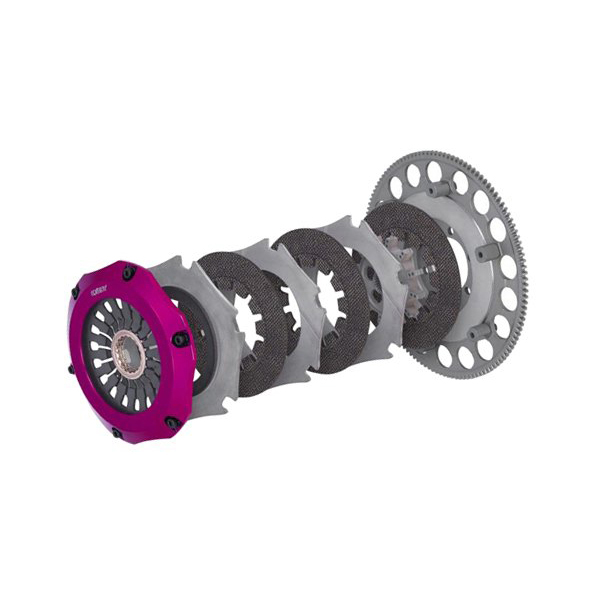
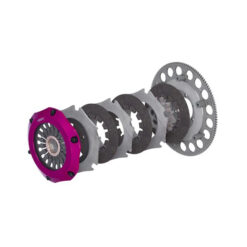
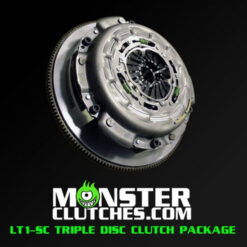

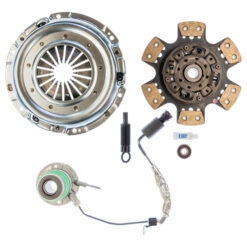
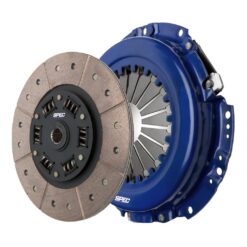
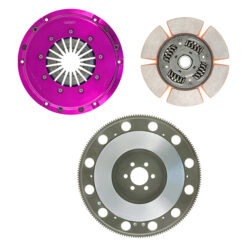
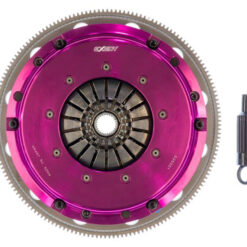
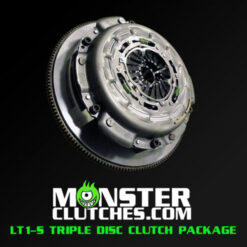
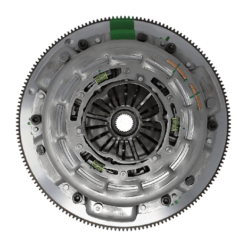
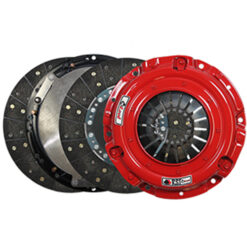

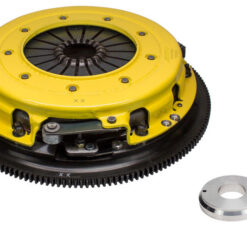
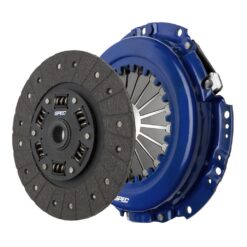
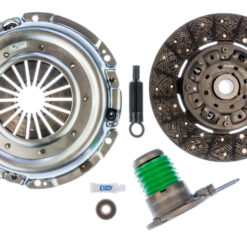

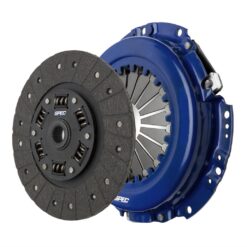
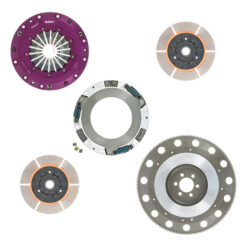

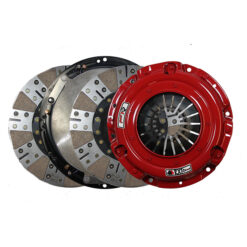
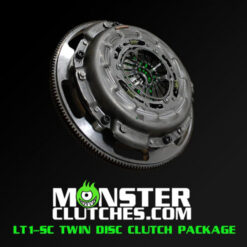
There are no reviews yet.